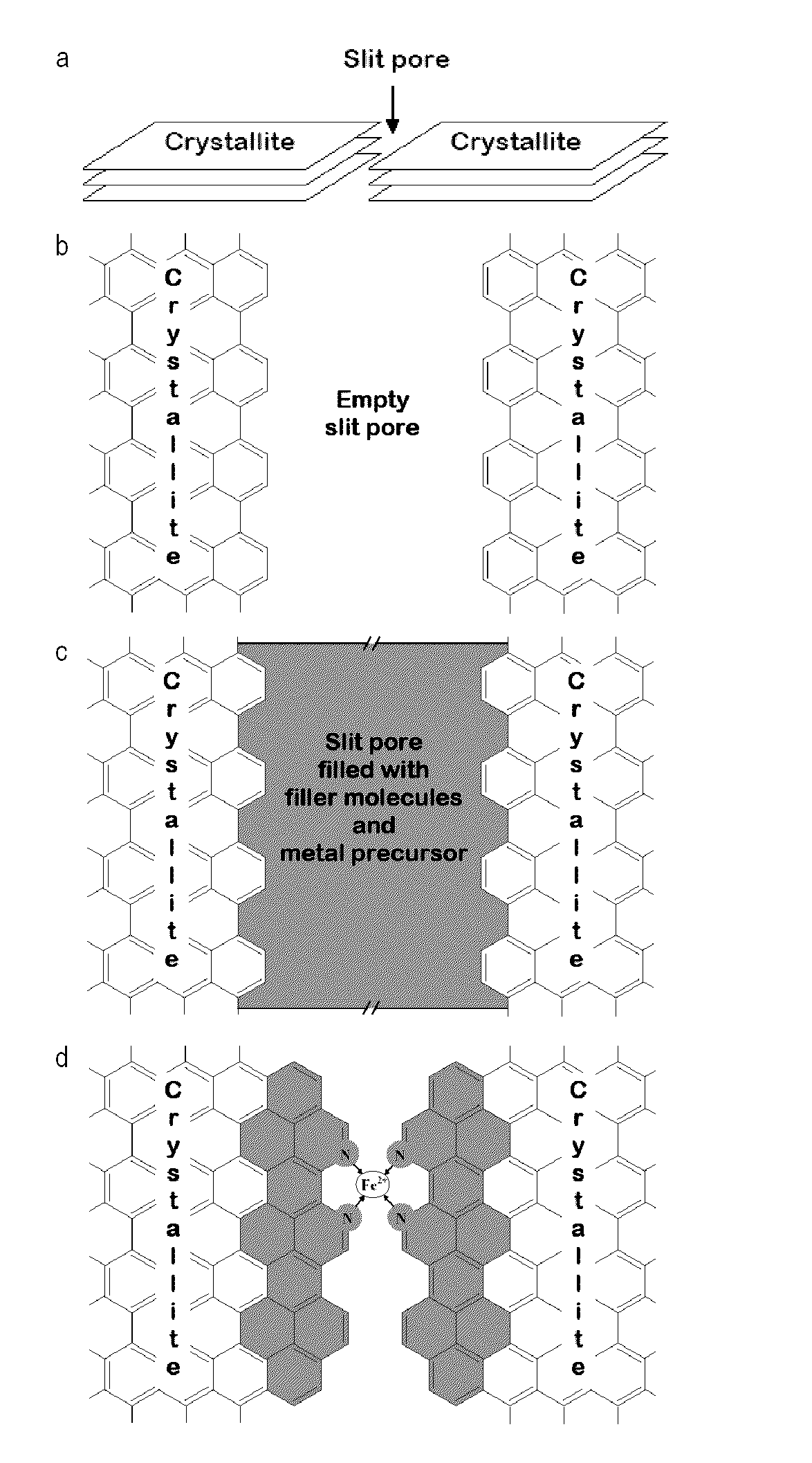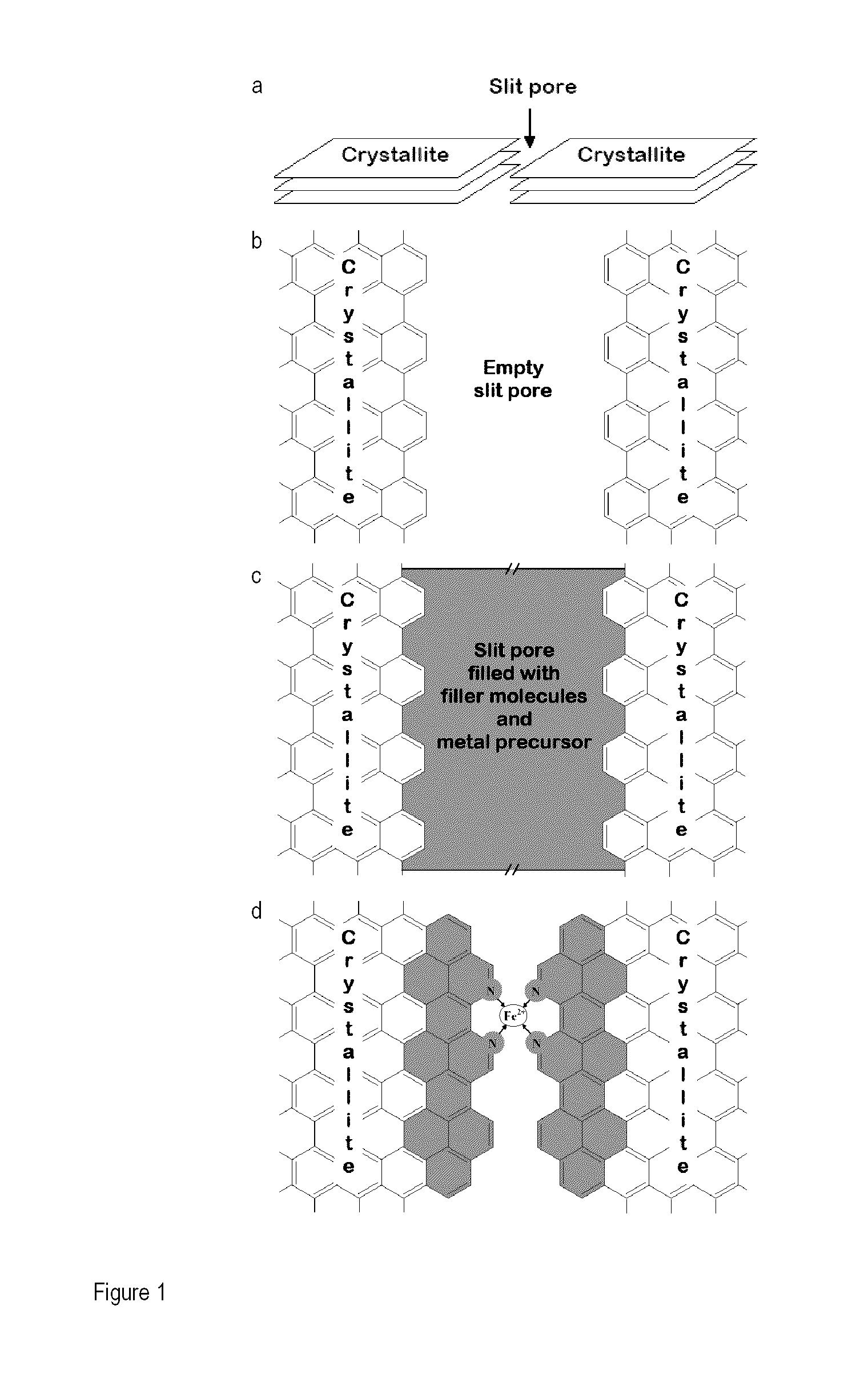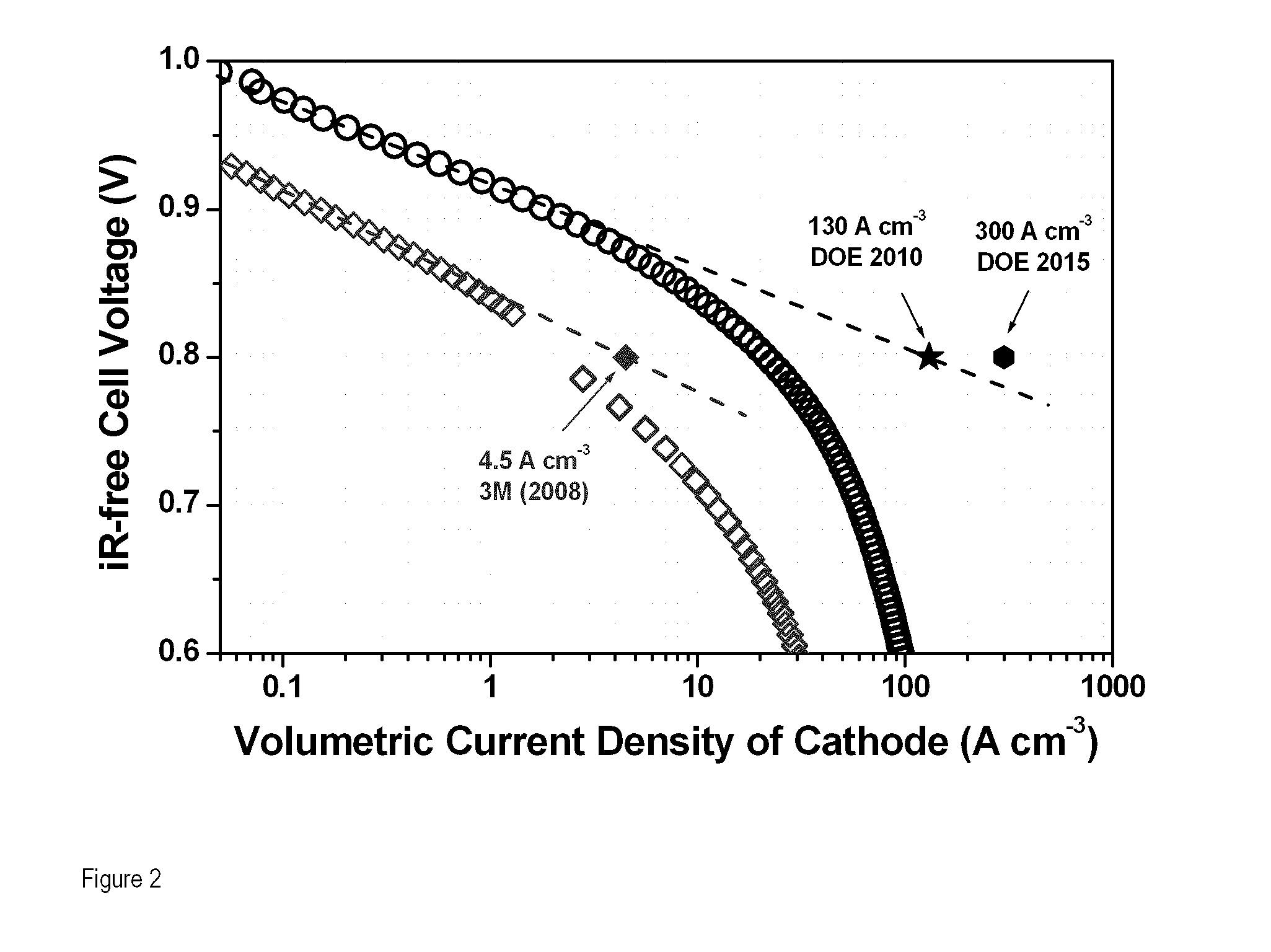Catalyst precursors, catalysts and methods of producing same
a catalyst and precursor technology, applied in the field of catalyst precursors and catalysts, can solve the problems of increasing the prohibitive cost of platinum, increasing the cost of pemfcs, and increasing the cost of pemfcs, and causing the price of platinum to ris
- Summary
- Abstract
- Description
- Claims
- Application Information
AI Technical Summary
Benefits of technology
Problems solved by technology
Method used
Image
Examples
example 1
[0189]The embodiments of the invention described below elevates the catalytic activity of iron-based NPMCs by a factor>25 compared to the previously best reported activity (REFERENCE 7); high enough to equal Pt-based cathodes with loadings≦0.4 mgPt·cm−2, at cell voltage≧0.9 V. The results presented below show that sufficiently active and inexpensive NPMCs for the ORR are possible. The present NPMCs will be useful for ORR in direct alcohol, formic acid and alkaline fuel cells.
[0190]To capitalize on the high micropore content of microporous carbon blacks and overcome the limitation due to their lack of disordered carbon, these micropores were filled with a mixture of pore-filler (PF) and iron precursor. Doing so creates a catalyst precursor that complies with the four factors required for producing active NPMCs, as described above. This innovative concept is illustrated in FIG. 1. To overcome the limitation of solubility and / or adsorbability associated with the impregnation method, pl...
example 2
[0225]Other catalysts according to the present have been prepared by filling the micropores of a microporous support by planetary ballmilling with the following pore-fillers: PTCDA,
[0226]The loading of pore-filler ranged from 5 to 85 wt % based on the total weight of the catalyst.
[0227]Using BlackPearl™ as the microporous support, these catalysts showed satisfying catalytic activity for loading>50 wt %.
[0228]Catalysts have also been prepared using different microporous supports: BlackPearls™ (Cabot corp., BET area 1200 m2 g-1, surface micropore 900 m2 g−1), and KetjenBlack™ (Akzo Nobel, BET area 1400 m2 g−1, surface micropore 500 m2 g−1). Pyrolysis was performed in Ar at temperatures ranging from 500 to 1100° C. Interesting catalytic activities have been observed at temperatures T>800° C.
[0229]Using PTCDA as a pore-filler, both KetjenBlack™ and BlackPearls™ yielded catalysts with good activities.
[0230]Using KetjenBlack™ as a microporous support and PTCDA, hexacarbonitrile or tetraca...
example 3
[0231]Catalysts similar to those of Example 1 were prepared with iron acetate, ferrocene and ferricyanide as non-noble metal precursors. These catalysts were prepared using 50 wt % of phenanthroline and 50 wt % of BlackPearls™ with a nominal Fe concentration of 0.2 wt %. Pyrolysis was performed under Ar or NH3. The same good catalytic activities were obtained will all non-noble metal precursors.
PUM
| Property | Measurement | Unit |
|---|---|---|
| Fraction | aaaaa | aaaaa |
| Fraction | aaaaa | aaaaa |
| Mass | aaaaa | aaaaa |
Abstract
Description
Claims
Application Information
 Login to View More
Login to View More - R&D
- Intellectual Property
- Life Sciences
- Materials
- Tech Scout
- Unparalleled Data Quality
- Higher Quality Content
- 60% Fewer Hallucinations
Browse by: Latest US Patents, China's latest patents, Technical Efficacy Thesaurus, Application Domain, Technology Topic, Popular Technical Reports.
© 2025 PatSnap. All rights reserved.Legal|Privacy policy|Modern Slavery Act Transparency Statement|Sitemap|About US| Contact US: help@patsnap.com



